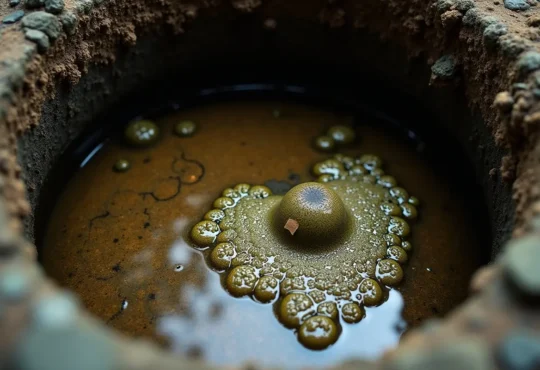
How to Replace Toilet Flange
The toilet flange, also known as the closet flange, is a crucial component that connects your toilet to the drain pipe and secures it to the floor. Over time, this fitting can deteriorate. If you notice water pooling around the base of your toilet, a wobbly bowl, or soft, spongy flooring nearby, it’s likely time to learn how to replace your toilet flange.
Contents
- 1 Preparing for the Toilet Flange Replacement
- 2 Step 1: Disconnect the Water Supply Line
- 3 Step 2: Remove the Toilet Tank
- 4 Step 3: Unfasten the Toilet Bowl
- 5 Step 4: Remove the Old Wax Ring and Flange
- 6 Step 5: Measure and Purchase the Replacement Flange
- 7 Step 6: Install the New Toilet Flange
- 8 Step 7: Install the New Wax Ring
- 9 Step 8: Reinstall the Toilet Bowl
- 10 Step 9: Reattach the Toilet Tank
- 11 Step 10: Reconnect the Water Supply Line
- 12 Step 11: Turn on the Water Supply and Test
- 13 Step 12: Final Touches and Clean-Up
- 14 FAQ
Preparing for the Toilet Flange Replacement
Before diving into the replacement process, it’s essential to gather the necessary tools and materials. Here’s what you’ll need:
Tools:
- Adjustable wrench
- Screwdrivers (flathead and Phillips head)
- Putty knife or paint scraper
- Plunger (optional)
- Measuring tape
- Drop cloth or old newspapers
Materials:
- Replacement toilet flange (matching the size, shape, and material of the existing one)
- New wax ring
- Replacement toilet bolts and nuts (if not included with the new flange)
- Rags or towels
Additionally, it’s crucial to turn off the water supply to the toilet and drain the tank and bowl completely. This step will prevent any unwanted water leaks or spills during the replacement process.
Step 1: Disconnect the Water Supply Line
Locate the water supply line that connects the toilet tank to the wall. This is typically a braided hose or a rigid metal pipe. Using an adjustable wrench, carefully loosen the connection at the toilet tank end. Be prepared for some residual water to drain from the line.
Step 2: Remove the Toilet Tank
Most modern toilets have a two-piece design, with the tank sitting atop the bowl. To remove the tank, locate the bolts or nuts that secure it to the bowl. These are typically found at the base of the tank, near the back.
Use your screwdriver or wrench to loosen and remove these fasteners, then gently lift the tank off the bowl and set it aside.
Step 3: Unfasten the Toilet Bowl
With the tank removed, you can now focus on the toilet bowl itself. Locate the bolts or nuts that secure the bowl to the floor. These are typically found at the base of the bowl, near the front and back. Use your wrench or screwdriver to loosen and remove these fasteners.
Once the fasteners are removed, you’ll need to break the seal between the toilet bowl and the flange. This is accomplished by gently rocking the bowl back and forth until it becomes loose. Be prepared for the bowl to be heavy, as it can weigh anywhere from 70 to 120 pounds.
If you’re unsure about your ability to lift the bowl safely, don’t hesitate to seek assistance.
Step 4: Remove the Old Wax Ring and Flange
With the toilet bowl removed, you’ll have access to the old wax ring and flange. Use your putty knife or paint scraper to carefully remove any remnants of the old wax ring from the flange and the base of the toilet bowl.
Next, locate the screws or bolts that secure the flange to the floor. Use your screwdriver or wrench to remove these fasteners, then lift the old flange off the drain pipe.
Step 5: Measure and Purchase the Replacement Flange
Before purchasing a new toilet flange, it’s crucial to measure the diameter of the drain pipe to ensure you get the correct size. Use a measuring tape to determine the pipe’s diameter, typically either 3 or 4 inches.
Visit your local hardware store or plumbing supply store and purchase a replacement flange that matches the size, shape, and material of the old one. Many stores carry universal flanges that can accommodate both 3-inch and 4-inch pipes, making your selection easier.
While you’re there, don’t forget to pick up a new wax ring and any additional hardware (such as bolts and nuts) that may not be included with the replacement flange.
Step 6: Install the New Toilet Flange
With your new flange in hand, it’s time to begin the installation process. Start by cleaning the area around the drain pipe, ensuring it’s free of debris or old sealant.
Next, carefully place the new flange over the drain pipe, ensuring it sits flush against the floor. If the flange doesn’t sit level, you may need to use spacers or shims to raise it to the proper height.
Once the flange is in position, secure it to the floor using the provided screws or bolts. Tighten these fasteners snugly, but be careful not to over-tighten, as this can cause the flange to crack or become distorted.
Step 7: Install the New Wax Ring
The wax ring is a crucial component that creates a watertight seal between the toilet bowl and the flange. There are two methods for installing the new wax ring:
- Attaching it to the flange: Place the wax ring directly onto the flange, centering it around the drain pipe opening.
- Attaching it to the toilet bowl: With the toilet bowl on its side, carefully press the wax ring into the recess at the base of the bowl, ensuring it’s level and secure.
While attaching the wax ring to the toilet bowl is generally considered the preferred method, it can be more challenging due to the weight and awkwardness of maneuvering the bowl. Choose the method that you feel most comfortable with, and don’t hesitate to seek assistance if needed.
Step 8: Reinstall the Toilet Bowl
With the new flange and wax ring in place, it’s time to reinstall the toilet bowl. Carefully lift the bowl and position it over the flange, ensuring the bolts or mounting holes align with the corresponding holes in the flange.
Gently lower the bowl onto the flange, applying even pressure to compress the wax ring and create a tight seal. Avoid rocking or twisting the bowl, as this can break the seal or damage the wax ring.
Once the bowl is in position, secure it to the flange using the provided bolts and nuts (or the ones you removed earlier, if they’re in good condition). Tighten these fasteners snugly, but be careful not to over-tighten, as this can crack the porcelain.
Step 9: Reattach the Toilet Tank
With the bowl securely in place, it’s time to reattach the toilet tank. Carefully lift the tank and position it onto the bowl, aligning the mounting holes with the corresponding bolts or fasteners.
Secure the tank to the bowl using the fasteners you removed earlier, tightening them snugly but not over-tightening.
Step 10: Reconnect the Water Supply Line
Locate the water supply line that you disconnected earlier, and reconnect it to the toilet tank. If you removed the line from the wall, reattach it securely, ensuring there are no leaks or drips.
Step 11: Turn on the Water Supply and Test
With everything reassembled, it’s time to turn the water supply back on and test your newly installed toilet flange. Flush the toilet several times, checking for any leaks around the base or between the tank and bowl.
If you notice any leaks, tighten the appropriate fasteners or adjust the positioning of the bowl or tank as needed.
Step 12: Final Touches and Clean-Up
If your toilet is functioning properly with no leaks, congratulations! You’ve successfully replaced the toilet flange.
Take a moment to clean up any mess or debris from the project area, and dispose of the old flange, wax ring, and any other materials properly.
With a new, secure flange in place, you can rest assured that your toilet will function reliably and without the risk of water damage or unpleasant odors.
With the right knowledge and tools, you can save a significant amount of money by tackling the toilet flange replacement yourself. However, if you’re unsure about your ability to complete the task safely and effectively, it’s always better to seek professional assistance to avoid potential issues or costly repairs down the line.
FAQ
Can you replace the flange on a toilet?
Yes, replacing the toilet flange is a common plumbing repair that can be tackled by many handy homeowners. By following the steps outlined in this guide, you can successfully replace a faulty or damaged flange, ensuring a secure and leak-free connection between your toilet and the drain pipe.
Are toilet flanges glued in place?
Toilet flanges usually use screws or bolts, making them easy to remove and replace. Older homes might have glued-in flanges, which are tricky. Seek professional help for glued-in flanges to avoid damage.
Should a toilet flange be flush with the floor?
So, the toilet flange should be slightly above the floor by about 1/4 inch. This ensures a proper seal and prevents leaks. If it’s flush or below, use spacers or shims to raise it.
Are toilet flanges removable?
Usually, toilet flanges can be easily removed with screws or bolts. Just unscrew to detach from the drain pipe. However, as mentioned earlier, glued-in flanges might require professional assistance.
What happens if toilet flange is broken?
A broken toilet flange can cause leaks, foul odors, and health hazards. Additionally, water damage and mold can result from gaps, while sewer gases can escape. Address any signs of damage promptly by replacing the flange.
How much does it cost to replace a toilet flange?
Replacing a toilet flange costs $10-$25, plus tools. DIY or hiring a plumber affects overall cost. Labor for pros ranges from $145-$165, varying by location and complexity.





 Hi I'm Joe.
Hi I'm Joe. 